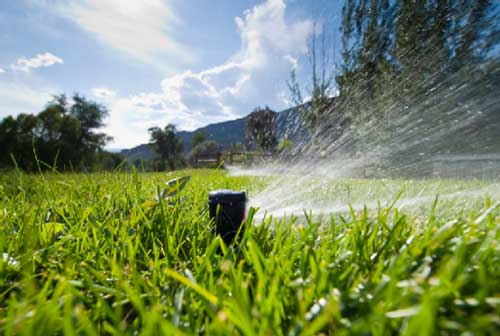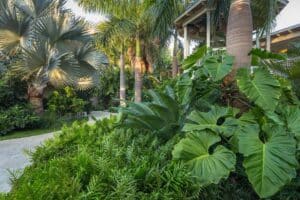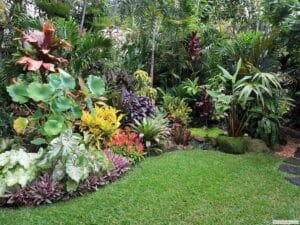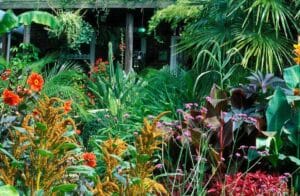There are many aspects to sustainable landscaping and water conservation. The basic concept of sustainable solutions is to minimise the use of resources like water, power, fertilisers and maximise their impact.
One of the most important resources used in landscaping is water and conserving water is quintessential to modern life given the dearth of pure clean water globally. There are some simple but useful techniques that can be used to conserve water while ensuring a healthy, green landscape.
1. Harvesting Natural Water
In areas with decent rains, rainwater harvesting is a great technique for water conservation. During rains, the running water is usually wasted. With a good lawn design, this surface water flow can be redirected to some a collection pond within the lawn itself. Though this may not seem a lot, in the long run this water could prove the difference between a good lawn and great lawn – especially in the drought periods.
2. Creating Hydrozones for water Conservation
Hydrozones are areas in the lawn where you have plants with similar water requirements. This is extremely important for sustainable development. By grouping plants that require similar irrigation you can actually create zones within your lawn that require different levels of water. This will let you irrigate the lawn in sections and ensure optimum use of water. If you are not careful you could end up losing some plants that die due to lack of water, or waste a lot of water trying to satisfy all the plants. Hydrozoning is a very simple but highly effective alternative to sustainable landscaping and water conservation.
3. Using Mulch
Besides creating hydrozones, you must also look to prevent the water in the soil from evaporating. This will ensure that plants get ample moisture without frequent irrigation. Mulch is minutely cut leaves and usual garden waste which is a great way to recycle nutrients back into the soil. Not only that, a generous layer of mulch (around 3” to 4”) on exposed soil around plants and trees can help reduce loss of water through evaporation. Thus you are not only reusing lawn waste, providing nourishment to plants but also conserving water.
4. Adopting efficient irrigation
Another great way to conserve water is to use efficient irrigation techniques. There are many ways to achieving this, using different alternatives. In case of large lawns, you can use spray irrigation to cover a large area with limited water supply. With a series of well-placed sprinklers you can cover a wide area in your lawn with ease. In case of small shrubs, flowering plants, etc., drip irrigation would work a lot better than spray. Drip irrigation provides dedicated water supply in controlled quantities to various plants depending on their needs. This is by far the most efficient irrigation and water conservation technique.
5. Planting Drought Resident Plants
There aren’t many plants that can live for long periods without much water; however there are a decent number of such plants that can provide you with good alternatives. Some of the plants in this category do not need any irrigation at all after they are planted while others require minimal irrigation not just to survive, but to blossom and thrive.
As you can see there are many ways to attain sustainable landscaping using water conservation. While it would be great to use all the above mentioned techniques, any combination of the list items would result is significant reduction in your water consumption for lawn maintenance and help in conserving water.





